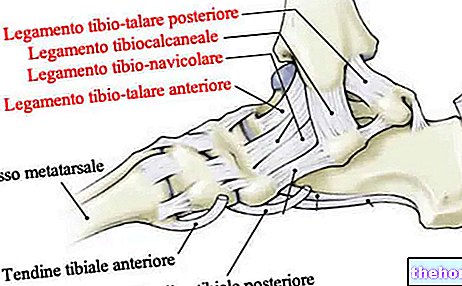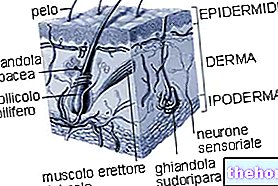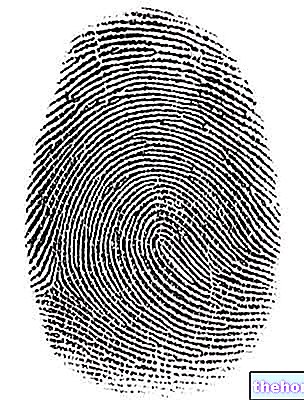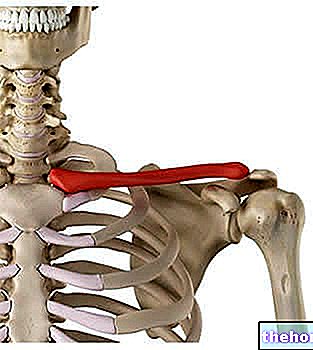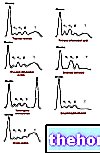Steroid hormones are chemical messengers produced from cholesterol and able, like all other hormones, to influence the activity of more or less large groups of target cells. Due to this common origin, steroid hormones have the tetracyclic structure (cyclopentanperhydrophenanthrene) characteristic of cholesterol.
Classification
In relation to the receptors with which they bind and interact, steroid hormones can be grouped into five categories: glucocorticoids, mineralocorticoids, androgens, estrogens and progestogens.

Secretion and mode of action
Steroid hormones, unlike peptide hormones, are synthesized only by a few organs and are not stored in reserve tissues, but produced when needed and readily released in the plasma. Here, by virtue of their poor solubility in water, they must necessarily bind to transport proteins:
specific, such as SHBG (sex hormone transport proteins) and CBG (corticosteroid-binding globulins)
and non-specific, such as albumin.
Only the free portion, separated from these proteins or bound to them in a mild way, represents the bioavailable and active fraction of the hormone.
Transport proteins maintain a circulating reserve of hormones, which is important in the event of sudden changes in their concentration. They also have the ability to extend their average life, protecting them from degradation; on the other hand, however, they limit their action, blocking their entry into the cells (only the free portion, therefore separated from these carriers, is biologically active). Since the catabolism of steroid hormones is entrusted to the liver, the circulating levels depend on:
the speed of synthesis;
from any exogenous inputs (hormonal therapies);
the concentration of transport proteins;
liver function.
As the liver removes steroid hormones from the plasma, the transport proteins obey the law of mass action and release the hormone proportionally, keeping the ratio of free hormone to bound hormone constant. they are particularly small, on the order of a millionth / billionth of a gram per milliliter of blood.
Thanks to their lipophilicity, steroid hormones are able to cross the plasma membrane in both directions (which is why they are not storable), and bind to specific cytoplasmic and nuclear receptors to carry out their genomic action (they activate transcription and genetic translation , stimulating the synthesis of new and specific proteins); however, in more recent times - for some steroid hormones such as testosterone, estrogen and aldosterone - specific membrane receptors have also been identified, able to bind to them and trigger cellular responses much faster than the previous ones.
Steroid hormones for short
MINERALCORTICOIDS: steroid hormones that increase the reabsorption of water and sodium, favoring the excretion of potassium and hydrogen ions. They are therefore important in the presence of hypotension (low blood pressure), as they increase blood volume. The synthesis of mineralocorticoids occurs in the glomerular area (more external) of the adrenal cortex. The best known and most active mineralocorticoid is aldosterone.
Main pathology of excess: Conn syndrome. Main defect pathology: primary adrenal insufficiency.
GLUCOCORTICOIDS: steroid hormones that have the purpose of raising blood sugar, increasing the production of glucose starting from some amino acids and decreasing its peripheral use. These hormones also stimulate the storage of glycogen in the liver and reduce the inflammatory and immune response. They are particularly important in the process of adapting to intense physical stress. The synthesis of glucocorticoids occurs in the fasciculated and reticular areas of the adrenal cortex. The best known and most active is cortisol. Main pathology of excess: Cushing's syndrome. Main defect pathology: Addison's disease.
ANDROGENS: steroid hormones that affect male sexual characteristics and abilities; they have an anabolic action especially at the level of the musculature and bone tissue. In women they are secreted in much lower quantities than in men. Androgens are synthesized by the interstitial cells of the Leydig (testis) and in small quantities also by the adrenal cortex (important for the female organism). The best known and most active is testosterone, which is then transformed into the powerful androgen dihydrotestosterone in certain tissues - such as the prostate, external genitalia and skin - which contain the 5α-reductase enzyme.
ESTROGENS: steroid hormones that affect female sexual characteristics and abilities; they have an anabolic action especially at the level of adipose, bone and muscle tissue. In men they are secreted in much lower quantities than in women. They are synthesized from androgens by the aromatase enzyme, especially in the ovary, in the placenta during pregnancy and to a lesser extent in various tissues (especially in the adipose one, which provides an important contribution in men and women after menopause). The best known and most active is estradiol.
PROGESTINES: steroid hormones that influence female sexual characteristics and abilities; they are important for the proper course of the menstrual cycle and pregnancy. The best known and most active is progesterone, synthesized in many tissues, because it is a precursor of the other classes of steroid hormones.

